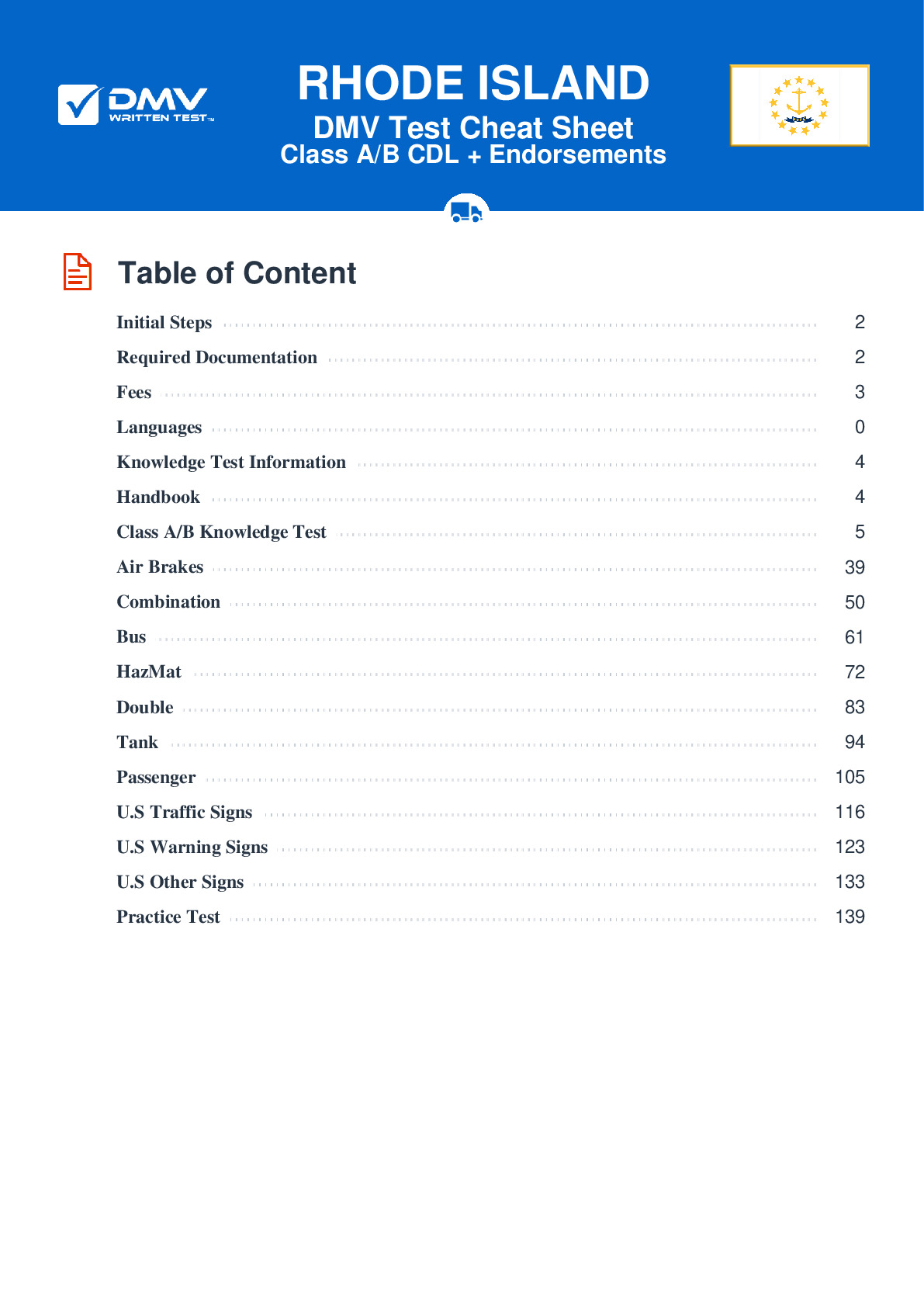Air Brakes
This endorsement is required for driving a vehicle with air brakes. To receive this endorsement, applicants must pass a written test. The test consists of 25 multiple choice questions. Each question has three answer choices. To pass, the applicant must answer at least 20 questions correctly. Test questions come from the Rhode Island Commercial Driver License Manual. Questions come from the chapter covering: Air Brakes. The Air Brakes endorsement may be used with the Class A, B or C CDL.
Number of Question
Passing Score
19. What do the two systems of a dual air brake system share?
Explanation
Both systems in a dual air brake systems share a single air compressor. If the air compressor is damaged, neither system will be able to operate properly.
20. The leakage rate for a triple combination vehicle with air brakes should be no more than ____ in one minute during a static leakage test.
Explanation
When performing a static leakage test on a triple combination vehicle with air brakes, the leakage rate should be no more than 5 psi in one minute. If the air leaks from the air brake system at a quicker rate, the vehicle should not be driven because something likely needs to be repaired.
21. What should happen before the air pressure in an air brake system tank falls below 55 psi?
Explanation
The low air pressure warning signal must activate before the air supply pressure drops below 55 psi in the air tank. If the warning signal does not turn on when being tested during an inspection, the vehicle is not safe to drive.
22. What can happen if the air pressure gets too low in an air brake system?
Explanation
Pressing and releasing the brake pedal unnecessarily can let air out of the braking system faster than the compressor can replace it. Air brakes may cease to work effectively if the pressure becomes too low.
23. On flat surfaces, wheel chocks:
Explanation
In situations where a driver cannot use a parking brake, wheel chocks can be used to hold a parked vehicle in place on a level surface.
24. When parked on a flat surface, you should:
Explanation
When parking on a level surface, you should use wheel chocks. If the vehicle is not equipped with spring brakes, this is essential to prevent the trailer from moving.
25. An application pressure gauge shows:
Explanation




